
This lesson plan was created to introduce Angles and Equations for 7th-grade math.
- Subject:
- Secondary Mathematics
- Material Type:
- Activity/Lab
- Assessment
- Author:
- Jacki
- Date Added:
- 02/06/2023

This lesson plan was created to introduce Angles and Equations for 7th-grade math.
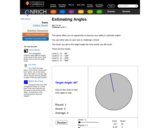
This Flash game for one or two players gives students practice in estimating the size of angles. A circle and a radius pointing in a random direction are given. The student activates a second sweeping radius, which can move in either direction, and tries to stop it at the specified measure. Three difficulty levels control the range of angle measures. Points are awarded based on closeness of the estimate. The Teachers' Notes page includes suggestions for implementation, discussion questions, ideas for extension and support.

This lesson is a fun way to help students understand that geometry is all around us! Students will have the opportunity to explore structures both virtually and in-person, helping them discover the significance of angles and shapes in architecture.Image Credit: "DSC_2072 geometry in architecture - Manchester" by Filip Patock is licensed under CC BY-NC-ND 2.0 via Flickr
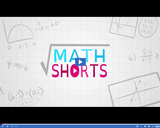
In this Math Shorts video, learn how to solve problems that involve finding unknown angles of various types. In the accompanying classroom activity, students first review supplementary, complementary, vertical, and adjacent angles and then watch the video. Finally, students apply what they’ve learned by writing and solving equations that involve angle measurement, using algebraic notation to represent relationships among angles. To get the most from the lesson, students should be comfortable solving equations in the form ax = b.
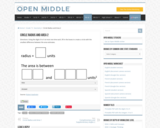
Open Middle provides math problems that have a closed beginning, a closed end, and an open middle. This means that there are multiple ways to approach and ultimately solve the problems. Open middle problems generally require a higher Depth of Knowledge than most problems that assess procedural and conceptual understanding.
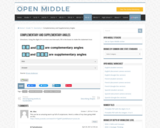
Open Middle provides math problems that have a closed beginning, a closed end, and an open middle. This means that there are multiple ways to approach and ultimately solve the problems. Open middle problems generally require a higher Depth of Knowledge than most problems that assess procedural and conceptual understanding.
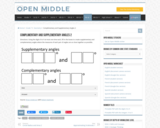
Open Middle provides math problems that have a closed beginning, a closed end, and an open middle. This means that there are multiple ways to approach and ultimately solve the problems. Open middle problems generally require a higher Depth of Knowledge than most problems that assess procedural and conceptual understanding.
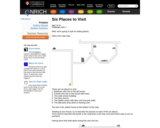
This activity gives students the opportunity to describe motions along paths involving turns of 45 and 90 degrees. Ideas for implementation, extension and support are included along with a printable sheet of the maps.
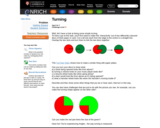
This activity has students experiment with turning through angles in a conceptual, qualitative way. It can be used prior to studying angles quantitatively. Students are given descriptions of physical phenomena to emulate on either the included Flash applet or a hands-on manipulative. They rotate colored disks in a circle to mimic turns and angles. The Teachers' Notes page includes suggestions for implementation, discussion questions and instructions for making the manipulative.

This is a one-slide interactive activity where students write equations based on their knowledge of complementary and supplementary angles.
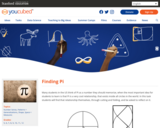
Many students in the US think of Pi as a number they should memorize, when the most important idea for students to learn is that Pi is a very cool relationship, that exists inside all circles in the world. In this task students will find that relationship themselves, through cutting and folding, and be asked to reflect on it.